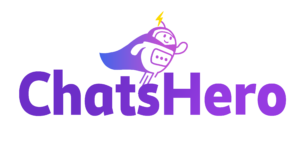How AI Chatbots Understand Slang (Bahasa Rojak!)

Modern communication is fast, casual, and often full of slang, emojis, and abbreviations. Customers don’t always type in complete sentences—they say things like “lah,” “lor,” or “btw,” and sometimes use regional slang such as “lah” or “syiok!!.”
For businesses, this presents a challenge: how can chatbots understand and respond naturally to informal language?
Thanks to advancements in natural language processing (NLP) and machine learning (ML), today’s AI chatbots are capable of interpreting slang and abbreviations with impressive accuracy. This article explains how they do it, why it matters, and how businesses benefit.
Why Understanding Slang and Abbreviations Matters
- Customer Experience – Customers expect bots to “get them” no matter how they type.
- Cultural Relevance – Recognizing local slang builds trust and relatability.
- Faster Conversations – Businesses engaging multilingual or younger audiences need bots fluent in casual language.
- Wider Reach – Abbreviations shorten chats, but only if bots can keep up.
How AI Chatbots Learn Slang and Abbreviations
1. Natural Language Processing (NLP)
NLP allows chatbots to break text into smaller parts and analyze meaning based on context.
- Example: “lah” → instead of formal speech.
2. Machine Learning and Training Data
Chatbots are trained on large datasets of real-world conversations, learning patterns such as:
- Common abbreviations: idk (I don’t know), btw (by the way), lol (laugh out loud).
- Regional slang: lah, syiok, meh, bossku.
3. Continuous Learning
AI chatbots improve over time through:
- Real conversations with users (picking up new slang).
- Feedback loops where admins correct mistakes.
- Integrations with cultural datasets to track new trends.
Benefits of Chatbots Understanding Slang
- More Human-Like Conversations – Makes interactions natural and engaging
- Improved Customer Satisfaction – Customers feel understood and valued.
- Global Reach – Adapts to different languages, dialects, and cultural expressions.
- Efficiency – Reduces confusion and clarifications, speeding up responses.
Real-World Applications
- E-Commerce: A user types “got promo?” → chatbot understands it’s a discount request.
- Banking: Customer says “balance please” → chatbot fetches account balance.
- Healthcare: Patient types “feeling dizzy lol” → bot recognizes the health concern.
- Hospitality: Traveler says “checkin tomorrow, ok?” → bot processes it as a booking inquiry.
Conclusion
Slang, emojis, and abbreviations are part of modern communication—and customers expect chatbots to keep up. With NLP, ML, and contextual learning, AI chatbots can interpret informal language almost like humans.
By understanding slang and abbreviations, businesses gain faster, friendlier, and more relatable conversations, building deeper connections with customers. In a digital-first world, the chatbots that can interpret “syiok” or “lah” are the ones that win customer loyalty.
Frequently Asked Questions
1) Can AI chatbots really understand slang like “lah” or “bossku”?
Yes. Modern chatbots use NLP and ML to recognize local slang and respond naturally in context.
2) Do chatbots need constant updates to keep up with new slang?
They improve through continuous learning, but admins can also update slang libraries to stay current.
3) Will slang confuse chatbots and reduce accuracy?
Not if trained well. Chatbots use context and semantic analysis to interpret meaning correctly.
4) Can slang understanding work across multiple languages?
Yes. Many AI chatbots support multilingual slang and abbreviations, making them effective in diverse markets.
Further Reading
Want to learn more about automating your rental business? Check out these resources:
